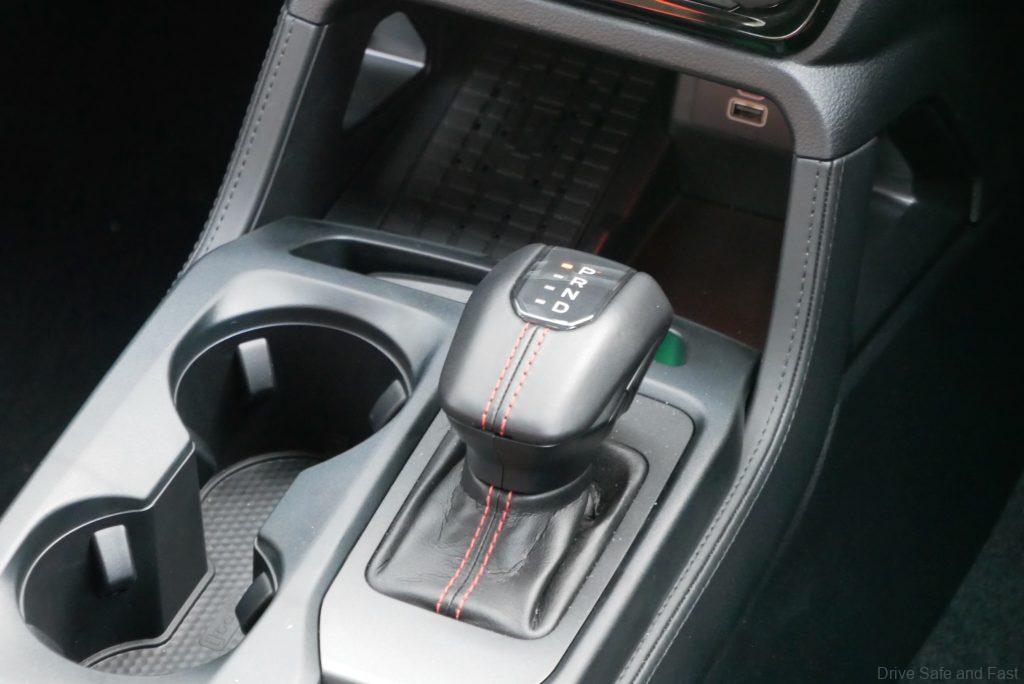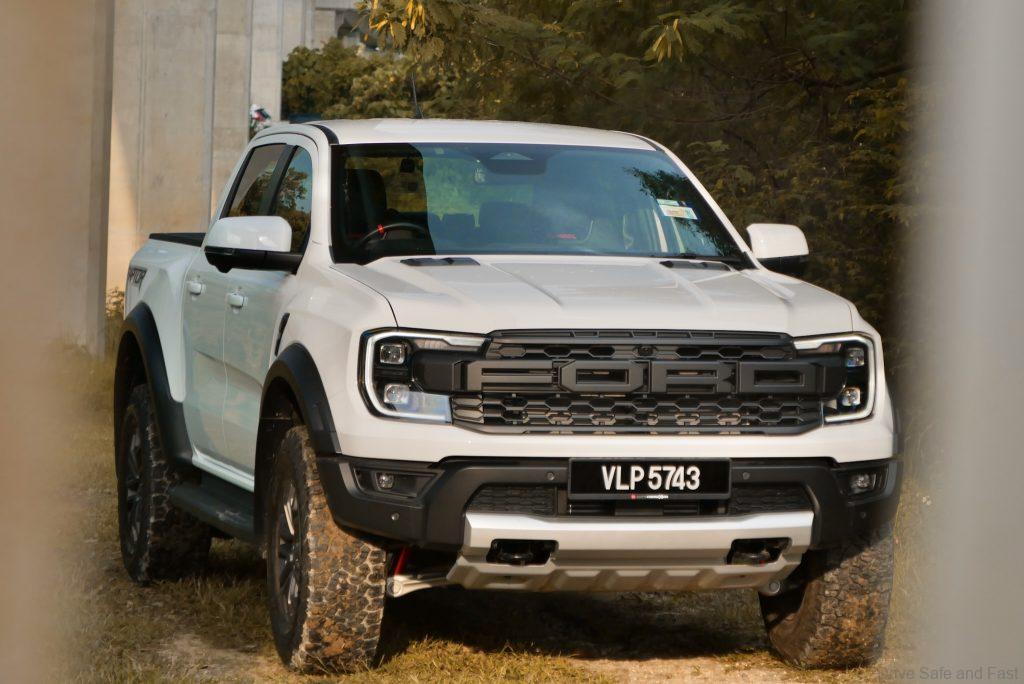The Ford Ranger Raptor Diesel brings economy back into the performance truck party.
If there’s one niche that Ford has managed to find itself dominating in Malaysia – it’s the lifestyle pick-up segment. When we drove the Ranger Raptor V6 last year, we got to experience the magic for ourselves. It was a combination that was completely alien to Malaysians – a pick-up truck chassis with competent suspension paired to a 3.0L turbocharged PETROL engine… It was a recipe for a flagship-worthy sports truck and we’re not surprised that it sold in respectable numbers.

Now we have the diesel-powered Ranger Raptor. In some respects, this is a double downgrade as the price of diesel has now shot up by over 50% plus the engine isn’t any different from the one found in the current Wildtrak and Stormtrak models.

At just 11% cheaper than the V6 petrol model, it’s hard to make a case for the diesel which has 40% less power and 16% less torque. That being said, it’s not beyond redemption and some aspects of the Raptor package really come into the spotlight when that petrol engine isn’t in the picture.

Same Tough Bones
There are some major similarities between the petrol and diesel Ranger Raptor models. The suspension set-up, is also enhanced here with Fox shocks.

These are the key mechanical differentiator of the Raptor model and with these shock absorbers you get significantly better comfort and ride quality feels rough poorly surfaced roads.

The new suspension set up also helps with dynamics on and off-road, giving you a lot more confidence to push the Ranger Raptor to limits where most pick-up trucks will start get dangerous.

Overall though it’s the reduction in judder and enhanced durability of these components that make the Ranger Raptor worth buying, even with a diesel engine.

Diesel Suits Its Character
Speaking of the diesel engine, the 2.0L 4-cylinder bi-turbo power unit here is no slouch. Sure, it lacks the “punchiness” and “rev-happy” nature of the petrol, but it still packs 210 horses and 500Nm of torque, which is nothing to scoff at.

Plus, because it’s a diesel, peak torque and power come much quicker than on a petrol model. This engine, though not quite as exciting as the petrol, actually suits the character of a 2.4-tonne truck much better. The Ranger Raptor in every form (including in its previous generation guise) has always struck me as a statement vehicle.

Something that a business owner in a blue-collar industry can aspire to. Being behind the wheel is less about the performance potential that it has and more about the its aura and ability to project power like a supercar or flagship sedan can. In that sense, the 2.0L diesel actually gives you a more relaxed and effortless power delivery.

Looks The Part
The Ranger Raptor Diesel isn’t distinguished from its Petrol counterpart in the looks and equipment department and this is a major plus. The Performance LED headlights, black accent-pieces on the hood, the FORD-shaped grille and an under-bumper bash plate define the face of this flagship pick-up truck from afar.





It’s easy to tell it’s a Raptor from the side as well. Just look for the off-road tyres, black vent ports on the front fenders, black wide wheel arch extensions, unique black alloy wheels, PVD-coated side steps and of course the massive “Raptor” decal on the side of the truck bed.




Around back, it’s just the badges that help it stand out. An aggressive 3D black-finished “Raptor” badge and a black “blue oval” are what you get here. No orange-accented tow hooks, decals or giant sports bars over the truck bed. The subtlety here is honestly refreshing.



It’s still a functional pick-up truck despite the sporty ambitions and high price. The bumper doubles as a step to reach into the truck bed. There’s an easy-lift tailgate, but no gas struts for a soft open. Orange cables help to hold the tailgate when deployed and give a pop of Raptor-appropriate colour. There are 12V and 3-pin UK plug type sockets back here as well for those who take their vehicles out camping or to work sites.




Step inside and you’ll find an acceptable amount of “bling”. Orange-red stitching and highlights on the seats, contrast stitching and trim pieces, go along well with the “Raptor” logos to elevate the cabin feel slightly though it does feel a little too youthful in here for my taste. I much preferred the subdued blue tone of the previous generation Ranger Raptor model. The leather+alcantara with black fabric headlining combination works really well, elevating the interior to suit its price tag.





Besides material selection, Ford have done quite a lot in terms of build quality and equipment to make the Ranger Raptor feel the part of a flagship vehicle. Twin displays with a rare square portrait orientation for Apple Carplay and highly customisable digital instrumentation are nice touches. The Bang & Olufsen sound system’s also better than it has to be in any pick-up truck.


In terms of utility, there’s a lot here and most of it is shared with the some members of the new generation Ranger family,. This includes its electric parking brake, auto parking, on-the-fly 4WD rotary switch, e-shifter, hidden door handles, a good mix of USB-C, USB-A and Qi charging options and 360-parking camera. You also get hidden storage under AND behind the rear seats, plus integrated front and rear dashcams from the factory.








Should you buy this over the petrol model?
Even with the price of diesel shooting up, I still think this model’s going to be noticably cheaper to run than the 3.0L V6 petrol. Not only is the petrol engine thirstier, it also begs to be driven hard. The diesel’s a fuel sipper in daily traffic and doesn’t invite you to climb up the rev range. I haven’t done the math to prove it, but from my testing of both variants, this is as good an answer I can give.

Plus, the annual road tax difference is about 4X lower for the 2.0L diesel model versus the 3.0L petrol. That being said, the niche this car fills is oddly specific – it’s a flagship pick-up truck. It straddles the line between weekend car, daily driver, utility vehicle, statement piece and performance truck uniquely.

So the question of whether the petrol or diesel makes more sense falls back to the buyer. If you see yourself driving this 3-5 times a week then the diesel is going to make more sense. If your Ranger Raptor is for special occasions, then spring for the petrol model.
2023 Ford Ranger Raptor Bi-Turbo Diesel Specifications
Engine: Inline 4, 16-Valve, DOHC, Commonrail Diesel, Twin Turbocharged
Capacity: 1,996cc
Gearbox: 10-speed Conventional Automatic
Max power: 210hp @ 3750rpm
Max torque: 500Nm @ 1750rpm
Price: RM248,888